Meet HL7 AUSTRALIA’s Benefactors
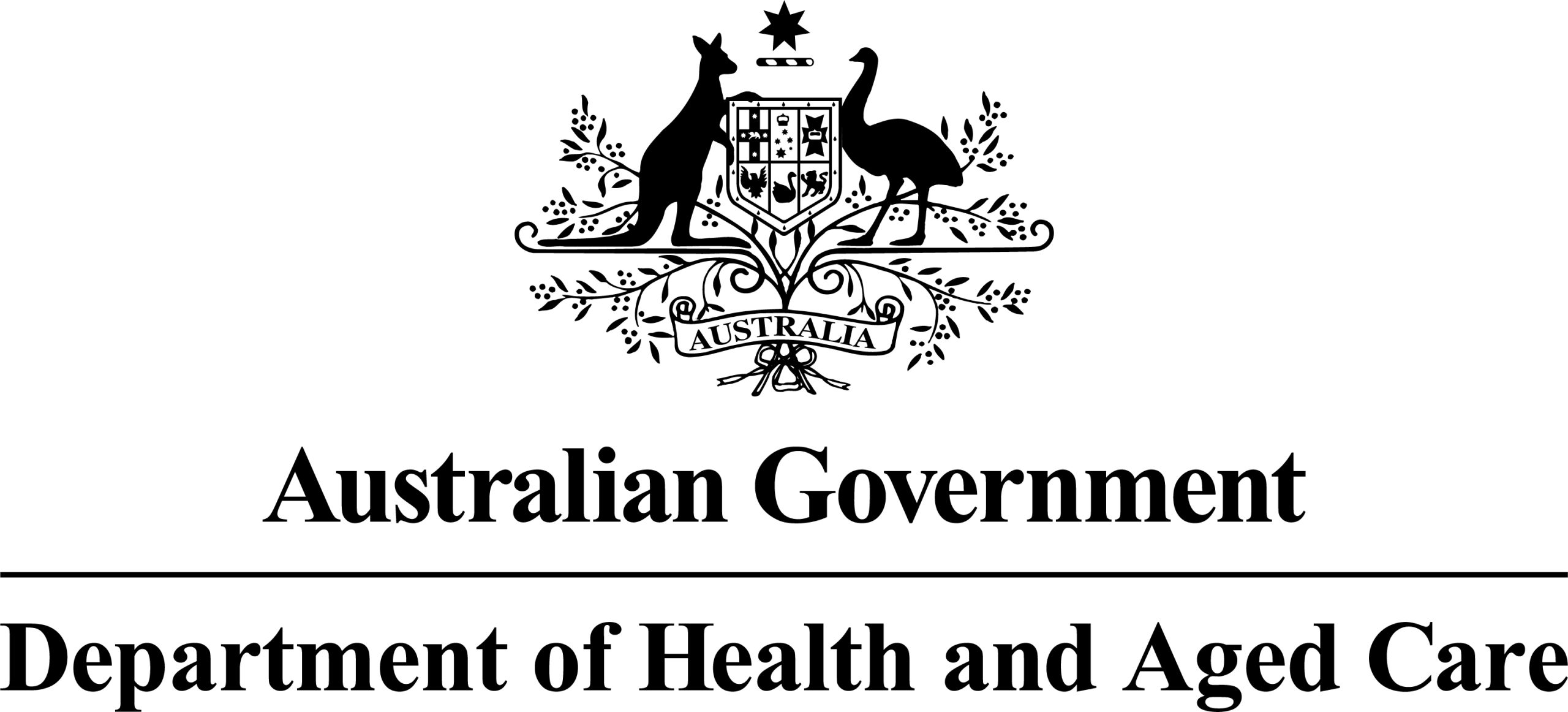
Department of Health and Aged Care
Simon Cleverley
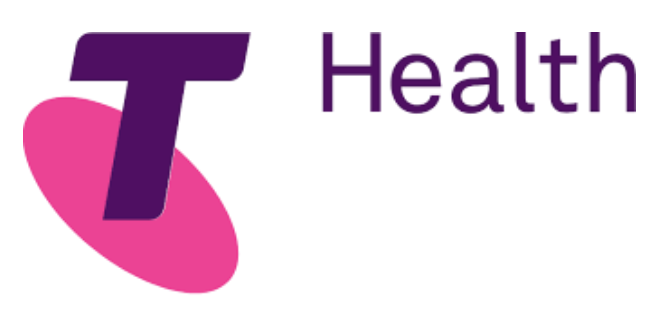
Telstra Health
Farhoud Salimi
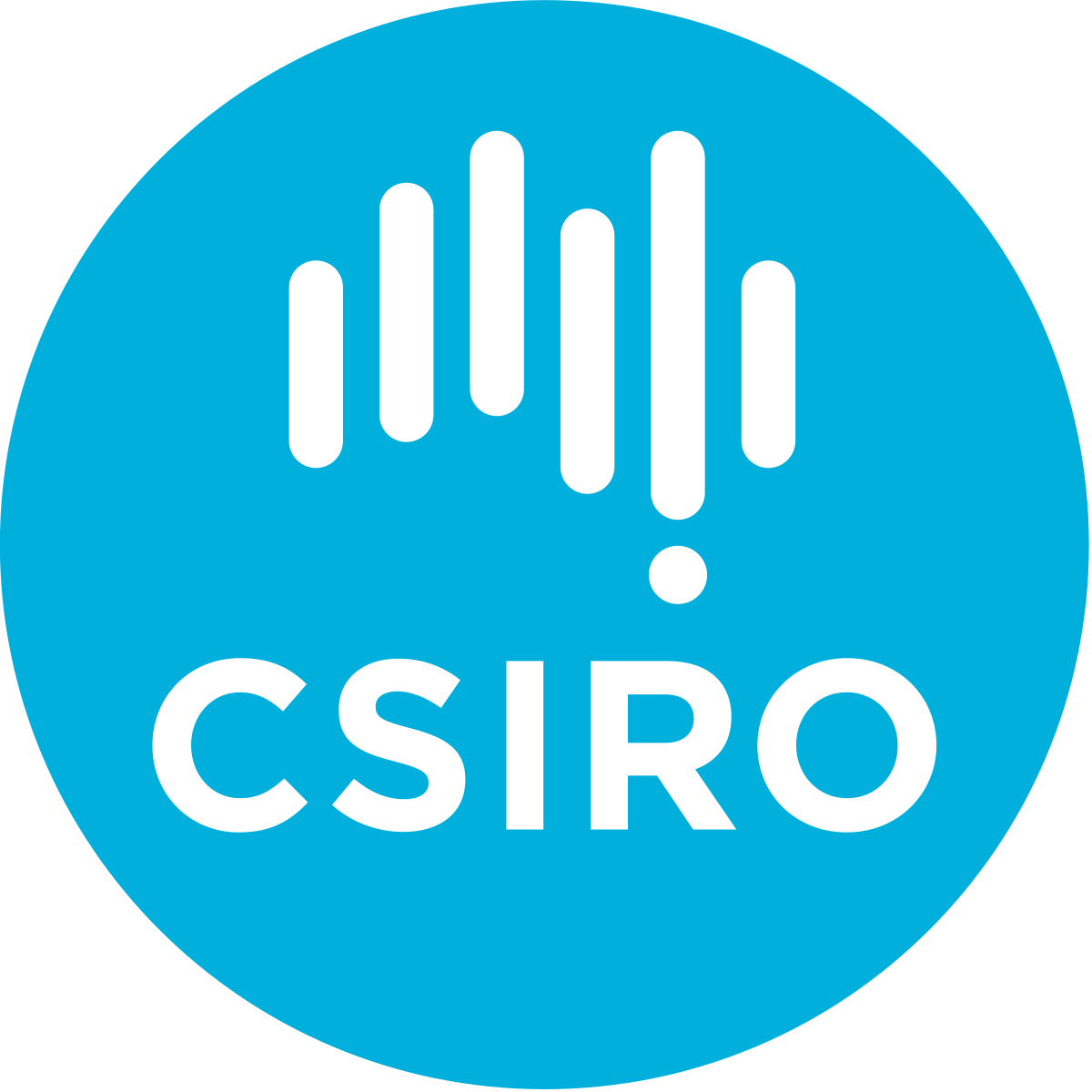
CSIRO
Dr David Hansen
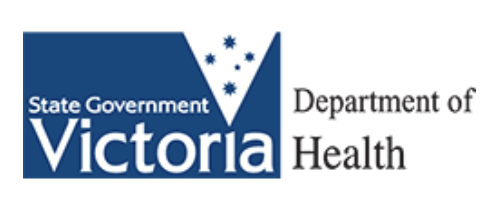
Department of Health Victoria
Neville Board
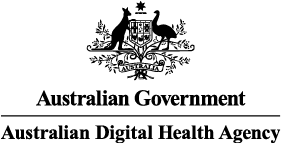
Australian Digital Health Agency
Amanda Cattermole
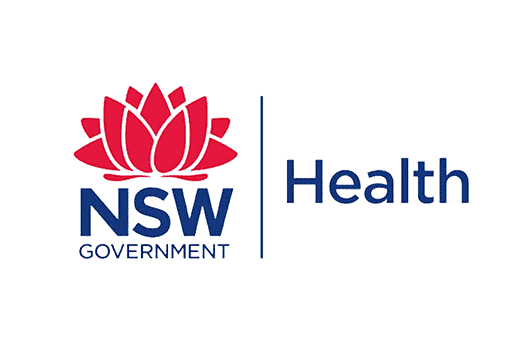
NSW Health
Dr Zoran Bolevich
Department of Health and Aged Care

Simon Cleverley
Simon is Assistant Secretary of the Digital Health Branch at the Australian Government Department of Health and Aged Care. Mr Cleverley has extensive policy, delivery, and leadership experience within the health sector, and is currently responsible for implementing the Australian Government’s recently released Digital Health Blueprint (2023-2033) which seeks to deliver a more personalised and connected health and wellbeing experience for all Australians.
Simon also represents the Australian Government on a range of committees and boards including the:
· Australian Digital Health Agency’s Jurisdictional Advisory Committee and Council for Connected Care;
· Australian Commission on Safety and Quality in Health Care’s Digitally Enabled Care Advisory Committee; and
· HL7 Australia’s Australian FHIR Coordination Committee.
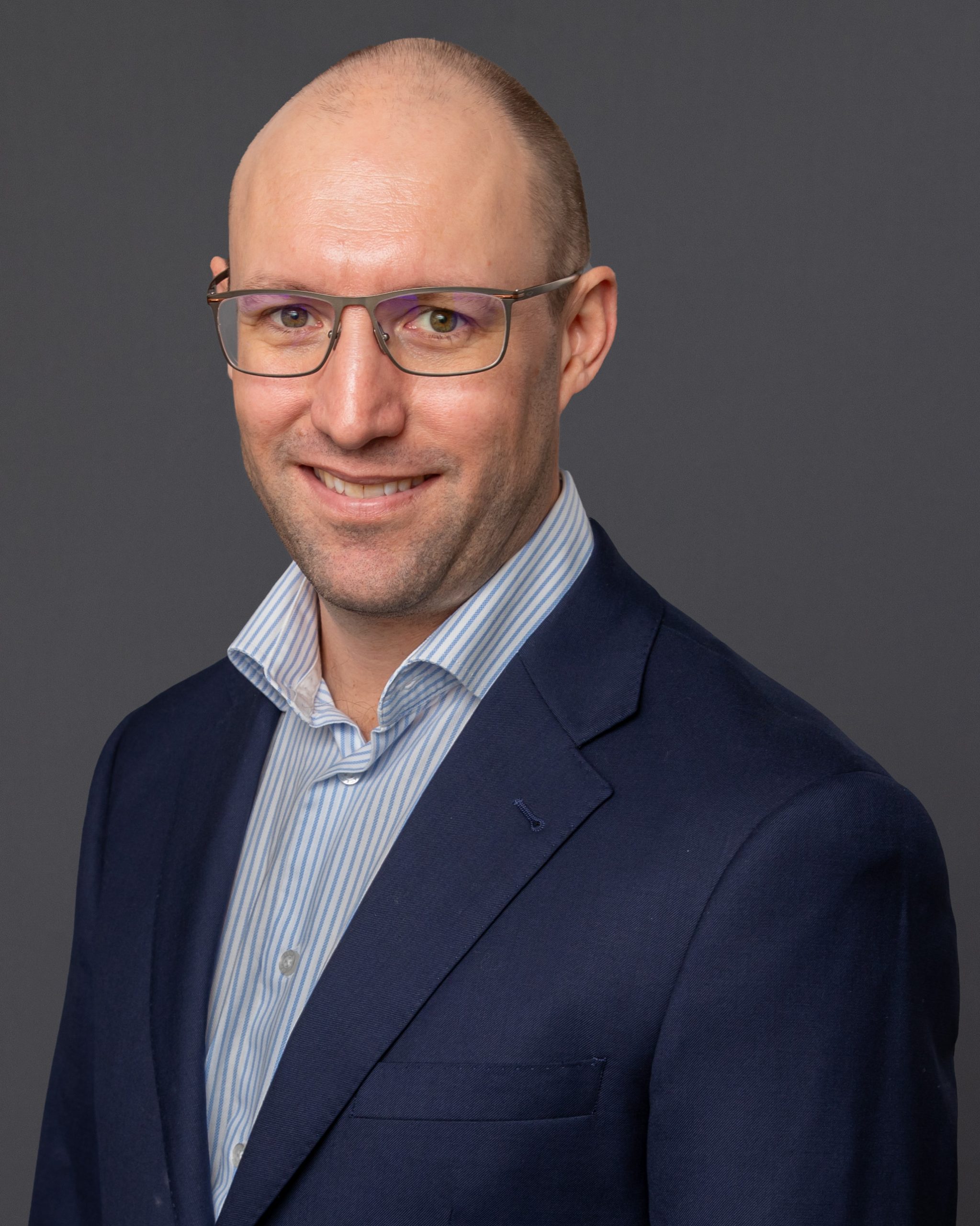
Moving the needle on interoperability with the Digital Health Blueprint
The Australian Government’s Digital Health Blueprint represents a crucial step forward in driving a more connected healthcare system. The release of the blueprint follows the Strengthening Medicare Taskforce Report, which emphasised the importance of digital and data solutions and modernising healthcare systems in terms of healthcare stewardship.
“In the 2023-24 Budget, the Government invested about $1.1 billion in a range of modernisation programs, including modernising My Health Record and a FHIR accelerator program, Sparked,” Simon Cleverley, Assistant Secretary at Australian Government Department of Health and Aged Care (DoHAC), told HL7 Australia. “The investment and the roadmap that sits alongside the blueprint demonstrate the ongoing commitment to driving the transformation of how we deliver healthcare in Australia.”
One of the critical building blocks to that transformation, Simon noted, will be a digital health strategy that is enabled through a true partnership approach.
The question is, what will it take to achieve that transformation across all healthcare systems Australia-wide? Simon sat down with HL7 Australia to share his vision and perspective.
HL7 Australia: As you have noted, partnership is integral to achieving an integrated digital healthcare future. With that in mind, can you talk about the consortium striving to develop national data models and interactions using Sparked and the FHIR Accelerator?
Simon: I think it’s caught many people across the health sector by surprise that governments across Australia have translated their deepening understanding of the benefits of a community approach, and been agile enough to move so quickly to leverage this approach to achieve those lofty goals through digital enablement. That’s come from lessons learned about how we all need to do business together to help people stay well for longer and to help those who are sick get the right, targeted treatment plan.
This consortium enables us to leverage the best knowledge, stakeholders and policy development expertise into a format that enables anyone to contribute to the way data is shared within the healthcare system. And it’s not just getting noticed in Australia. We are getting a lot of people coming from international governments and bodies who are interested in the pathway and partnership approach we have taken and are asking us for advice on how they can do similar sorts of things in their country. It’s really that partnership approach that has been the key to the success we have had.
HL7 Australia: As the blueprint makes clear a key pillar of connected digital healthcare is My Health Record. What is envisioned with the modernisation of the platform through data standards, such as FHIR?
Simon: My Health Record has been on a really interesting journey from its establishment in the early 2010s, which has enabled real-time sharing of information to benefit the consumer, no matter where they are. It provides that authorising environment for healthcare professionals that allows them to access information about their patients, again, no matter where they are. But we do need to keep moving forward to provide a seamless access point for consumers to get information about their health and well-being journey. And the modernisation agenda, including FHIR programs, are really going to be the catalyst for that transformation.
It’s not just about My Health Record; it’s about all the clinical systems out there as well. One of the powerful things that has been enabled through the FHIR program and the journey we have embarked on with CSIRO, the Australian Digital Health Agency and HL7 Australia, is that we can drive that transformation in order to achieve the panacea of an interoperable future. Rather than throwing out what we have, we can make sure that what we have can be improved upon. And, certainly, the government’s commitment to move to sharing pathology and diagnostic imaging reports by default, which we’re planning to have in legislation presented to the Australian Parliament this year, demonstrates that core objective.
HL7 Australia: Can we pivot to talk a bit about the DoHAC funding for the creation of the Australian FHIR Management Framework (AFMF) including the Australian FHIR Community Process (AFCP), and the establishment of the Australian FHIR Coordination Committee (AFCC).
Simon: The Sparked program was launched on 23rd August 2023, and now just seven months down the track we’re already seeing significant progress. That’s down to a strong partnership. What’s really crucial about the AFCC is ensuring we have scrutiny and appropriate open and broad views brought into the standards development process.
One of the things that I’m really focused on is having the appropriate governance to ensure that we can scale not only the standards at the core level but also springboard that to incorporate all the important use cases that drive that connected care agenda. From the AFCC’s perspective, it’s going to be really important that we do have that national viewpoint to assess where we are, where we are going and whether we have the right checks and balances in place. In my role as department representative on the AFCC I feel I’m learning a lot as opposed to contributing a lot. There’s a wealth of expertise to tap into, but we must also make sure we’re succession planning, not just around the AFCC itself, but around the standards community and around the industry and community more broadly to ensure we have the workforce of tomorrow to support all the use case work that’s going to have to happen once it’s developed.
HL7 Australia: HL7 Australia’s response to DoHAC’s Health Identifiers Framework consultation included the suggestion that the ageing B2B technical interface to the HI Service should be replaced with an API based on contemporary interoperability standards like HL7 FHIR and SNOMED CT. Is this under consideration once we have published a foundation standard like AU Core?
Simon: The Healthcare Identifiers Act is likely one of the single most important bits of legislation we have in this country that’s going to help us achieve full interoperability for our health system. However, the act is 14 years old now, and it’s not lost on us that it was written before a lot of the current capabilities we have existed. It was before we had things like the modernisation in the aged care space or connecting disability services in healthcare. It wasn’t fit for purpose to enable access for some of our most important administrative systems like Medicare and how we can pass Healthcare Identifiers through administrative systems to support patients end to end.
Therefore, the government does have some really important work underway to support the modernisation of the policy and the legislative framework that supports Healthcare Identifiers.
Our big focus at the moment is making sure that we do get a bit more dynamism built into the Healthcare Identifiers Act whilst maintaining vital protections for consumers. We will provide advice to government in consultation with states and territories to make sure that we get a fit for purpose, more robust policy framework that allows us to achieve that objective. And, the feedback from HL7 Australia in that context is definitely a consideration that we’re looking at.
We know a lot of organisations, including at the Commonwealth level, are looking at FHIR readiness within their organisations. We do want APIs to support the way that we deliver modern healthcare services across Australia into the future. But there’s no timeline at this stage because modernising Medicare and all the different systems has to be phased carefully.
HL7 Australia: As you mentioned, the states and territories are playing an important role in all of this. With that in mind, what is your call to action for your peers not only at states and territories, but also other Commonwealth agencies and even other parts of DoHAC with regards to involvement with Sparked and FHIR?
Simon: I feel there’s a groundswell now, and certainly within the events that I’m participating in around the FHIR accelerator, I’m seeing that enthusiasm to be part of these sorts of programs from states and across all parts of our delivery systems. I’m also seeing the calibre of people it’s drawing in.
The partnership, and the model that wraps around FHIR standards, including the role of HL7 Australia, demonstrates there’s really a sense that if you’re not there, you’re missing out on the opportunity to contribute to the future of modern healthcare delivery in Australia. That’s happening now, and we see that with the chief policy and information technology leads from states and territories turning up and participating and presenting in the forums being held; we see that through significant clinical involvement from right across the sector and from industry.
Over the next five years, we will see a significant increase in digital capabilities, but how we connect and use our national infrastructure — such as MyMedicare, the modernisation of My Health Record, and our Healthcare Identifiers Framework – is going to need to be phased carefully in concert with the modernisation agendas happening across states and territories and in the private sector.
Probably my call to action is, if you’re not in it you won’t be able to shape it. Having said that, I would say we have significant buy-in from states and territories in a range of activities, including Healthcare Identifiers, including the My Health Record system, including the work to overcome information sharing barriers in legislation between states and territories, and the work that is happening with building and designing new EMRs for hospital systems that allows GPs to have access.
Ground zero, though, is making sure that we have nationally consistent and agreed standards for moving that information around the system, which can then be supported by those legislative and policy frameworks. This is the time to shape how those standards will operate into the future. As we have seen in the Strengthening Medicare Taskforce report and from what has been said by Minister Mark Butler, we are going to need to get to a point in the next few years where we mandate these standards, not only to benefit information sharing, but also to address security and privacy concerns.
HL7 Australia: Has your role been difficult in terms of getting momentum around these initiatives and gaining the necessary commitment to and enthusiasm for these programs?
Simon: What’s really difficult about digital and data technology capabilities, services and skills is people think you have to be a technical person to contribute to the conversation. And what has been shown through this work program is that that’s not the case. We need the clinicians, the consumers and those from all walks of the policy development lifecycle to play their role in making sure these systems support the clinical workflows and are simple for consumers to use. Certainly, there is a role for people that can actually translate the policy objectives into systems that allow us to move information around the healthcare environment. But it’s really about ensuring we have buy-in from all parts of the marketplace.
What is really difficult is ensuring we have a very clear understanding of the problems we are trying to solve, and what role digital and data systems can play in overcoming these problems. Those challenges include an inability for consumers to have a connected story across their health journey; lack of clinical insights at the point of care for clinicians wanting to provide more tailored, high-quality care; and inability to have real-time sharing of health information to support public health and planning at scale across our federated country. Having a strong community that is truly representative of the problems we are trying to solve will make it much clearer to governments around Australia as to why they are investing in foundational digital health capabilities and services.
We need plans to ensure we are clear about prioritising the delivery of these national capabilities. That’s why something like the Blueprint is so important. However, we also need a clear set of objectives and we recognise the need for a standards development roadmap. We will consult on the development of this roadmap throughout 2024, and seek to publish this in 2025 to help provide clear line of sight to all stakeholders about what we need to put in place to support Australia’s digital health transformation journey, and when.
We have to maintain and strengthen our partnership and the conversations we’re having with decision-makers. It’s really that ongoing collaboration and sharing what this means, and making sure that we’ve got the right people in front of those conversations at the right time. I do think we have the right ingredients and I’m positive that over the next 18 months of this Accelerator program we will be able to go back to the Commonwealth Government, state governments, and other investors with the direction that we are going to take as a country, which will allow all stakeholders to invest with confidence.
HL7 Australia: Is there a message for those stakeholders who are more reluctant to commit to standards?
Simon: I recognise, and our partners recognise, that we are stronger together. But, at the same time, we need to give visibility for the future of where we’re going and how we incentivise people to invest in moving a FHIR standard along as a baseline for how we move information around the system in Australia. We want to build and strengthen the community so everybody feels that they have a seat at the table and can contribute to the evolution of data and terminology standards in Australia.
I recognise that there is huge demand on organisations to do the things they are asked to do to comply with our changing regulatory frameworks, and to evolve their systems to improve user experience for their clients. We need to make it easy for people who are time poor to have the opportunity to become involved. I think the Sparked program strikes a good balance and offers opportunities to be involved. There have probably been some false starts in Australia when it comes to how we achieve a more connected health system but I would say to those who are still not sure if this is genuine to look at the signals. These include a national health interoperability plan that is being implemented with national oversight, Australia’s first FHIR accelerator program, and a Commonwealth Government leading and stewarding implementation of these initiatives backed by significant funding over the next two years. We must address challenges such as limited workforce capacity, a system that is dealing with more chronic disease, and a system that does not enable health information to move around in a systemic way. We must all commit to standardising our healthcare system.
For now, we are focused on making sure that we can get people together to create that dynamic partnership so that we can then make some decisions as a community about how we implement those standards.
The good news is we’re seeing more stakeholders who understand the role FHIR has within our ecosystem.
We know there’s a lot of work to be done but I think HL7 Australia is strong and I’m looking forward to continuing to work with HL7 Australia and all the other partners to drive the value proposition and achieve those national healthcare interoperability objectives.
Telstra Health
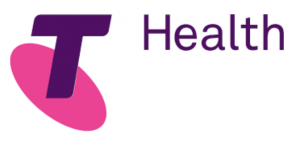
Farhoud Salimi
Farhoud has a career spanning over 20 years with local and global experience both in private and public sectors. Farhoud has exceptional people leadership and technical experience and has been recognised and referenced extensively in IT forums.
A key achievement of Farhoud and his team was recognition at the 2021 NSW Premiers awards for the Mass Vaccinations Systems rollout in response to the COVID-19 pandemic. Most recently, Farhoud has been recognised by the CIO Magazine, as part of the CIO50 2022 Awards, as one of Australia’s most innovative CIOs for his contribution to the NSW Health digital journey.

Why Telstra Health is putting interoperability at the heart of its technology innovation
Healthcare standards and interoperability have been central to Telstra Health’s vision and ideology since its inception. The organisation has grown through a number of strategic acquisitions, and in each case the focus has been on bringing into the portfolio companies that either have HL7 v2 or, more recently, Fast Healthcare Interoperability Resources (FHIR) as part of their messaging or interoperability framework.
“We were one of the first Australian-based electronic medical record (EMR) solution developers to integrate HL7 v3 into what was then Personally Controlled Health Electronic Records (PCEHR) and is now My Health Record,” said Farhoud Salimi, Chief Technology Officer, Telstra Health.
Telstra Health has also been a leader in FHIR adoption from as early as 2016, using the standard to develop the Enterprise Provider Directory (EPD), which helps large healthcare networks manage their provider information.
HL7: The relationship between the two organisations is a well-established one. Can you talk about recent projects with HL7 that are a priority for Telstra Health?
Farhoud: We recently deployed our Virtual Health Platform, which is a native FHIR virtual care and clinical data repository that enables interoperability with electronic medical records using standard FHIR-based resources. We also recently introduced Kyra PAS, which will be one of the first FHIR-native mobile-enabled Patient Administration Systems (PAS) to be developed and deployed in Australia.
We’re also working with HL7 on a number of projects. For example, we’re actively involved in trying to progress the adoption of the International Patient summary in Australia, with CSIRO, HL7, and the Australian Digital Health Agency (ADHA).
We’re also heavily involved in the FHIR accelerator program, Sparked, which is being driven by HL7, ADHA, the Department of Health and Aged Care and CSIRO. We’re proud to not only be a founding member of the program, but also to be co-chairing the FHIR AU core program stream.
HL7: What do you see as Telstra Health’s role with regards to integrating FHIR into healthcare products?
Farhoud: We believe FHIR will become more commonplace across healthcare, and we’re committed to building more open interoperable systems as part of our product suite. Our Virtual Health Platform is built on FHIR standards from the ground up, which allows us to easily integrate and exchange information with other FHIR-based environments.
We’re also investing in using FHIR standards to exchange information between our primary care platforms and some of the other platforms. On top of that, we’re also looking at how we tackle some of the bigger challenges around connected health with some use cases with the industry and some of our aged care providers later in the year. We see HL7 and FHIR as the way to move our products forward and make them interoperable.
HL7: These kinds of partnerships are interesting in that they do bring together government bodies and departments, as well as vendors like Telstra Health. How do you see your role, versus the role of government bodies with the FHIR community process?
Farhoud: In some of these initiatives that we’ve talked about you have the federal government, CSIRO, the states, HL7 and industry all in the same room trying to move that needle forward in terms of developing the AU standards and the implementation guide. And that’s very powerful.
As Telstra Health, we have a significant footprint in both primary aged care and also population health, with solutions in both private and public sector organisations. By having agreement – from a policy perspective and a standards perspective – it’s possible to really make a difference. The fact is, you need all the parties to be involved to agree on how they’re going to share and exchange data across the continuum. Solving the problem of interoperability will move some of the blockers the jurisdictions have in terms of delivering healthcare, it will simplify how the government reports on healthcare, and, from our perspective, it creates more opportunities to innovate.
HL7: Telstra Health has clearly taken a lead with these types of partnerships. Can you share your thoughts more broadly about the role of vendors in the support and promotion of standards?
Farhoud: Regardless of whether you are in government or industry, we all know that Australia’s healthcare system, like the rest of the world, must address the stresses and strains of an aging population and workforce barriers. Technology developments together with standards can help to make a difference in that space by enabling the flow of data between all the systems used in healthcare.
Unless vendors participate in the adoption of those standards by implementing them in their product sets I don’t think we’ll ever achieve the best patient outcomes and solve some of those more complex problems around sharing care records across the continuum. By not only using standards, but also participating in actually creating them, vendors can help to create that groundswell.
The other side to this is that solving this problem of data interoperability is not detrimental to the vendor community; rather, it opens a lot more avenues for us to look at more value-add offerings and innovation around the edges of core data platforms.
HL7: There are many reasons for FHIR adoption, but what are some of the barriers both for vendors and healthcare organisations?
Farhoud: Part of the challenge is legacy applications which are tightly embedded in how the healthcare industry works. Healthcare has traditionally been slower to invest in and adopt new technologies, whether due to affordability or just the more safety conscious way that they approach things. Addressing the issue of legacy systems will be one of the bigger challenges in terms of how we adopt these new FHIR standards.
Another is the potential for every vendor to create their own interpretation of the FHIR standards. The Sparked program seeks to address just that to ensure we can meaningfully share information and exchange data. We need to make sure we get an Australian implementation of FHIR, using the governance around the standards to be able to enhance it and make sure that it is fit for purpose rather than pivoting off in different directions.
One other is that policies and legislation need to keep up with industry around data sharing. And if we’re going to push industry and jurisdictions to start adopting FHIR, funding models for primary and aged care do need to keep up with updates and other requirements.
HL7: Clearly HL7 and Telstra Health have a well-established relationship. Where do you see that going in the future?
Farhoud: We’re supporting a bunch of standards, including FHIR AU, SNOMED CT-AU and Australian Medicines Terminology (AMT). We work closely with HL7 Australia, the Department of Health and Aged Care, ADHA and CSIRO. We are working internally on how we can adopt FHIR standards more and more across all of our products and platforms, so we can actually connect all of our platforms together in a more seamless way.
We believe that the combined power of all of our platforms is much more powerful than the sum of each of their parts, and having a standards approach is how we can make that vision come alive. We’re going to keep interacting and partnering because we feel that using those standards internally is what is going to be our secret sauce in making our platforms and products work better together.
HL7: We’ve talked a bit about the role of the vendor community. What advice do you have for other vendors in terms of getting involved with HL7?
Farhoud: We believe interoperability should become commonplace in order to respond to the emerging trends in healthcare and aged care. The vendor community can help by embedding interoperability in their solutions. The other aspect of this is that clinicians and consumers are asking for more up-to-date data, and the only way you can do that is to have a standard way of stitching all their information together across the continuum.
I’d recommend that vendors participate in the HL7 connectathons so they can provide input into the direction of the standard and ensure it’s implementable into the workflow. I see standards as an opportunity to be more innovative and further the cause of what the healthcare community is trying to achieve.
Commonwealth Scientific and Industrial Research Organisation
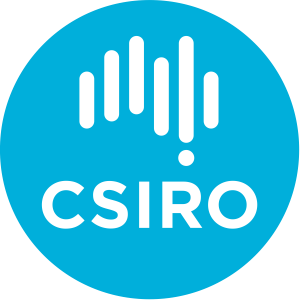
Dr David Hansen
Dr David Hansen is CEO and Research Director of CSIRO’s Australian e-Health Research Centre. With over 150 scientists and engineers, AEHRC is CSIRO’s digital health research program and a joint venture between the CSIRO and Queensland Health. David is involved in leadership positions in many national research initiatives including the NHMRC Centre for Research Excellence in Digital Health and the Australian Alliance for Artificial Intelligence in Healthcare. David is on the board of the Australian institute of Digital Health and is a member of the Connected Care Council for the Australian Digital Health Agency. David is passionate about the role of information and communication technologies in health care and the role of digital health professionals in developing a safe, high quality efficient and sustainable healthcare system in Australia.
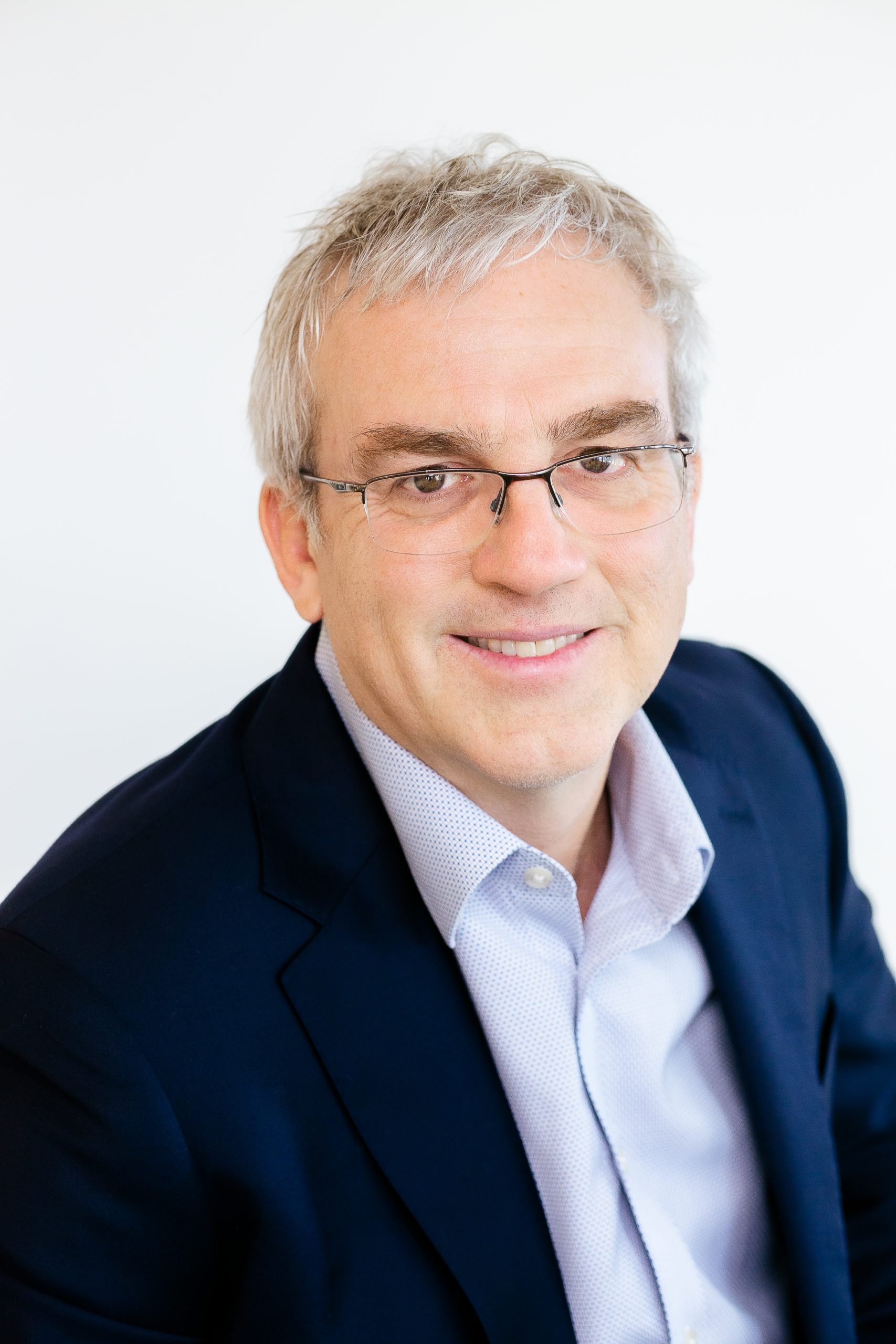
CSIRO at the forefront of health data interoperability: An interview with the e-Health Research Centre’s CEO
Australia’s national science agency, CSIRO, is at the forefront of addressing health data interoperability across the country. As CEO of CSIRO’s Australian e-Health Research Centre (AEHRC), Dr David Hansen leads 150 scientists and engineers focused on efforts to drive digitally enabled services to improve the safety, quality and efficiency of healthcare.
Integral to that objective is standardisation and David describes HL7’s Fast Healthcare Interoperability Resources (FHIR) standard as a boon to those efforts.
“About a quarter of our staff are focused on interoperability – so clinical terminologies such as SNOMED and data standards such as HL7 FHIR – our goal is to lower the barrier and increase the value of adopting standards across healthcare in the digital health world,” he said in a recent interview with HL7 Australia. “The standardisation that FHIR gives us for digital technology and healthcare is really important.”
HL7: Can you share with our members how your relationship with HL7 began and how it has evolved?
David: We had done a little bit with HL7 as a standard, but it wasn’t until Graham Grieve (FHIR Product Director at HL7 and Adjunct Science Fellow at CSIRO) started developing FHIR that we really began our collaboration with HL7 around the terminology standards within FHIR and in particular the terminology APIs. Graham was aware of our significant research and development around the use of standard terminology, such as SNOMED and LOINC, so we began discussing what sort of APIs FHIR should have when it comes to terminologies, which drove us to get involved with FHIR standards development.
With the implementation of the FHIR terminology APIs, we now have a world-leading FHIR terminology server, Ontoserver, which we continue to develop, license and provide. But FHIR is also a delivery mechanism for many of our other digital health tools, whether that’s decision support, or just SMART on FHIR apps. So we use the FHIR standard a lot across the rest of our research program from genomics and imaging through to virtual care and mobile health and data analytics.
HL7: Would you mind talking about some of the major projects that CSIRO is working on with HL7, and the key objectives around those?
David: The biggest one is the Sparked accelerator program, which is a collaboration between us, HL7 Australia, the Department of Health and Aged Care, and the Australian Digital Health Agency (ADHA). The objective is to set the foundations for digital health in Australia in terms of the FHIR.AU core data set for interoperability. That’s a two-year project by the end of which we anticipate having the appropriate standards and implementation guides approved through the FHIR process.
We’re really following on, and trying to mimic to some extent, the Argonaut project which ran in the United States to get an agreed standard that then was part of the health information technology provisions of the 21st Century Cures Act.
As part of the Sparked project we are supporting HL7 Australia to establish the HL7 FHIR management committee in Australia and a process for the national adoption of FHIR standards, supported through the FHIR community process.
HL7: When did the Sparked collaboration begin?
David: It was initially funded in this year’s (2023) budget announced in May and it kicked off on 1 July. We had our launch in mid-August. But it does build on work that we’ve been doing for three or four years, which started with the Primary Care Data Quality Foundations Programme and defining the foundation data standards in primary care funded by the Department of Health. For this we led a community process to build an implementation guide for the exchange of information between GPs. Then we continued that with some work around the SMART Health Check forms server and health checks for Aboriginal and Torres Strait Islander people.
HL7: How did the Sparked collaboration come about?
David: For a number of years we’ve been partnering with the Australian Digital Health Agency and HL7 Australia to run Connectathon events around the use of the FHIR terminology server which underpins Australia’s National Clinical Terminology Server. Because of that, the primary care branch of the agency wanted to know how to standardise the use of SNOMED, and our advice was – do it through a FHIR implementation guide and the exchange of information between GP practices. And that has now led to the Sparked programme.
HL7: Are there other priority projects with HL7 that you would like to highlight for our members?
David: One of our research engineers has been looking at how we leverage FHIR and terminology together around analytics, so we’ve built a FHIR analytic server called Pathling. There’s now a lot of focus internationally on analysis of FHIR data. A working group at the last HL7 international standards meeting was looking at FHIR and SQL and how we use it to hide a lot of complexity of FHIR under SQL. So, a lot of what we’ve been doing in Pathling is along those lines.
HL7: Why is the collaboration with HL7 a priority both for CSIRO as well as for the broader healthcare objectives?
David: One of the things we’re conscious of is that running a standards development organisation isn’t easy, both from a finance and broader support perspective. What we’re trying to do with the Sparked program is to not only build the implementation guides for the Australian core data sets but also to embed the FHIR community process into Australia’s digital health community. By doing that, when other organisations want to collate and share data – say in the genomics or infectious diseases fields –they’re not asking CSIRO but rather the wider FHIR community. So, the aim of the collaboration and our Sparked initiative is at the end of the two years to have established the processes and the support structures that we need for HL7 Australia to be offering those services generally to the digital health community. We would argue that, in so doing, we have established processes that can improve interoperability in Australia across the board, which we believe will lead to better health outcomes.
Department of Health Victoria

Neville Board
Mr. Board is Victoria’s Chief Digital Health Officer and heads the Digital Health Branch. The Branch conducts health sector planning and assurance. The Branch is developing unique identification and clinical information sharing for Victoria health services, and is connecting health services to the My Health Record system. The Branch also leads the Victorian health service cyber security program and ICT operational assurance programs.
Prior to coming to Victoria in 2018, Mr. Board headed the eHealth and Medication Safety program at the Australian Commission on Safety and Quality in Health Care. He is also an Adjunct Fellow at Macquarie University’s Institute of Health Innovation.

Building continuity of care and patient centricity: A conversation with Department of Health Victoria’s Chief Digital Health Officer
The digitisation and connection of care is a primary objective for the Digital Health Branch of Victoria’s Department of Health. For Neville Board, Chief Digital Health Officer, digitisation means care is safer, health information is more legible and care journeys can be connected.
In 2021, Victoria’s Department of Health issued its digital health roadmap to improve safety and efficiency of Victoria’s healthcare system. The Roadmap is premised on securely wrapping health information around the patient. This requires different applications to exchange information, and Victoria’s partnership with standards development organisation HL7 Australia Ltd plays a big part in realising this.
As Neville noted during a recent interview with HL7 Australia: “We require our health services to deploy systems in such a way that they are interoperable. It is the right thing to have Australia’s national standards organisation lead that work. Our Policy and Funding Guidelines direct health services to apply national standards for the secure exchange of health information, largely developed from HL7 Australia.”
HL7: Are interoperability and standards important for Department Health Victoria, and why?
Neville: Interoperable standards are about connecting the patient’s care journey, and that is fundamental to Victoria and probably to all state health systems. There are a couple of areas where it’s particularly important. One is where the patient moves around between different facilities, so clinicians need to see what medicines they are taking, discharge summaries, and previous lab and imaging tests. None of that will work without a common standard and the ability to be interoperable. That’s fundamental for continuity of care and for patient safety. What makes this more complex is that Victoria has quite a heterogeneous environment, with different lab systems, electronic medical record (EMR) systems and patient administration systems. That means common interoperability is even more important to provide a shared view through something like health information exchange.
Can you share with our members a little background on the Digital Health Branch of the Department of Health Victoria and how it is helping to drive health standards and interoperability?
The Digital Health Branch operates the state-wide cybersecurity program; we invest in health service ICT resilience and assure major projects across the sector. Apart from data security, it’s important that systems are down as little as possible for safety reasons. We conduct the investment planning for the digitisation of care, and we manage state-level projects such as the statewide mental health and wellbeing record, the information sharing elements of Victoria’s Pathology Reform, and a broader health information sharing agenda.
In addition, we have quite a strong focus on rural and regional health services in Victoria. These operate as shared service Alliances. So, we do a lot of coordination to support that.
Victoria’s digital health roadmap obviously sets out to make care safer and more connected; it also underpins virtual care models as we shift to higher rates of home-based care and specialist rural outreach. You cannot do that safely without secure, connected digital systems underneath. Another priority area in our Roadmap is to give patients access to their own information. Again, you cannot give citizens access through a front door without coordinated digitisation of care processes and health services.
What do you believe are the barriers that make it hard to achieve state-wide healthcare interoperability?
The first is obviously cost. While interoperability will save the healthcare system money in the long run, the transition to applying standards does require investment.
The second barrier is about the technical nature of conversations, with terms such as interoperability and standards adoption. Senior decision-makers can lose interest with these types of dense and jargon-laden language. It would be much better to focus the message on safety, continuity of care and patient-centricity. The more we talk about FHIR, HL7, mapping methodologies and SNOMED, the less likely it is that the messages of improved patient and clinician experience, safety and access will get through. That is a problem because you do need that investment.
Another complexity is how much you mandate, and how much you encourage and support. We were fortunate in Victoria to get support for updating hospital messaging systems across the state, swapping out JCAPS with Rhapsody, which was quite a large investment. It might sound dull, but it has absolutely transformed the sector’s ability to be interoperable. Those foundational investments can be hard to get money for; they’re not as exciting as cutting a ribbon.
With those barriers in mind, how do we get to that next important step of building a connected healthcare system that does deliver continuity of care?
First we need to shift the narrative to connected care, enabling people to access their information and safe virtual care, and away from interoperability, FHIR and HL7 technology. The second thing is to national support and willingness to achieve conformance across participating systems. Having both investment and oversight is far more effective than just hoping people will conform.
Achieving conformance across larger, more complex EMR, lab systems and radiology is a hard journey, and we’re still at the start of that. One thing you can do is make that a requirement of your next tender and your next procurement. We do that in Victoria and have just completed procurement for health information exchange.
The other important element is the ‘clinician experience’, or ‘user interface’. If using an application is hard for clinical people, the change to legible, secure systems with decision support won’t happen. Think about how easy or hard it is for hospitals or general practitioners to ensure their treatment record can be made available to other providers on that patient’s journey. So, we need to ask how easy or hard it is for clinicians to take those steps needed to make generate and transfer that information, making it accessible and sharable along that patient’s journey.
We obviously need groups like HL7 to be working on the technical side of things, and a skilled workforce to, for example, to review a conformance checklist so you’re not missing anything. From our point of view, as with any large project, rollout takes time, but as we get more and more sites involved, the time to implement gets shorter and easier as we learn more.
If there is one takeaway or call to action from this interview you would like to give to the broader healthcare community, what would it be?
The patient journey has to be connected to improve the citizen experience, to make care safer and to enable more use of virtual care.
Australia Digital Health Agency

Amanda Cattermole PSM
“Ms Amanda Cattermole PSM is the Chief Executive Officer of the Australian Digital Health Agency, a role she commenced in September 2020. The Agency is auspiced by all the governments of Australia to lead digital health strategy for Australians and to drive digital innovation. It also builds national health infrastructure and delivers national digital health products and services to support Australia’s progress towards a safer and more efficient health system.
Amanda has previously held senior roles in the Commonwealth Departments of Treasury, Prime Minister and Cabinet and Families, Housing, Community Services and Indigenous Affairs, Services Australia, the Victorian Department of Health and Human Services and the Western Australian Department of Indigenous Affairs. In her earlier career Amanda worked as a lawyer in Victoria, the Northern Territory and Western Australia.”

The role and purpose of the Australian Digital Health Agency (ADHA) is to bring together different parts of Australia’s complex and asymmetrical healthcare ecosystem to support digital innovation and achieve a “modern, accessible healthcare system”.
To advance these goals, in August 2022, ADHA signed a memorandum of understanding with standards development organisation HL7 Australia Ltd to support the development of robust, easy to adopt and properly managed digital health standards.
As ADHA CEO Amanda Cattermole stated when the MoU was signed: “The objective is to create a new era of digital health in Australia with strong governance. This means open and collaborative processes for the agreement, development, testing, publishing and maintenance of digital health standards.”
HL7 Australia recently spoke with Amanda about ADHA’s role and purpose, why the collaboration with HL7 and other organisations and agencies is important, the challenges facing Australia’s healthcare system and what is being done by ADHA and others to mitigate these.
HL7: Can you share with our readers a little background on the ADHA, its setup and broader role in helping to achieve health standards and interoperability in Australia.
Amanda: First it’s important to understand that the agency was established by the states and territories and the Commonwealth and is funded by all of them. In establishing ADHA, there was broad recognition that the objective of interoperability and a connected healthcare system could never happen without buy-in from all stakeholders. We were set up to help with that buy-in as a coordinator in the development and stewardship of digital health standards in Australia.
Can you describe some of the ways in which you drive that coordination?
At a high level, we set the parameters for what an interoperable healthcare future looks like through our National Healthcare Interoperability Plan. This sets the expectations, the domains in which we need to work, and the way in which we think we should go about this in the one- to-five-year horizon. We also
engage with the standards community to support and enable standards development to flourish in Australia. That includes, importantly, our relationship with HL7.
Let’s go into a bit more detail on the interoperability plan, including HL7’s role in the broader goals.
Over the past couple of years, my team led a very broad-ranging consultation on what is needed to deliver health interoperability in Australia, which culminated in this plan. It has strong support from across the sectors. The plan articulates a nationally agreed objective to get to this new level of digital
maturity and bring us to a much more fully connected healthcare system. It defines the domains that need to be tackled to get there and sets out actions under each of those domains. One of the domains that is most important in the work we’re doing with our colleagues at HL7 is that there needs to be a live,
innovative, mature national digital health standards program.
The recently signed MoU serves to support the plan by helping to develop digital health standards. This is something we’re deeply committed to supporting and stewarding, along with our work with other partners, including CSIRO, who we’re collaborating with on clinical data and digital standards and
terminologies.
These objectives have support from our jurisdictional colleagues, including in industry. It’s something the Australian public expects and demands so that their information moves seamlessly across the healthcare system and ensures clinicians have it in front of them during any interaction with the consumer.
It won’t be easy, but these MoUs with partners like HL7 and CSIRO help to ensure broad agreement to get us to that next point.
What do you believe are the barriers that have made it hard to achieve
interoperability before now?
There are many challenges to standardisation but none are insurmountable as long as all the different parts of the system are working together and moving in the same direction. One challenge is just the sheer complexity of health itself. You only have to think about a system that is funded both federally and at the state level, privately and publicly, and is supported through the acute system, the primary care system and a network of specialists and allied health providers. On top of that any one hospital has a huge number of digital systems that come together, both administratively and clinically. And that is
extrapolated across multiple different hospitals.
To address this challenge, you have to be able to map a lot of interconnected parts in order to progress to a system that can meaningfully share information, support data analysis, protect data in whatever part of the system it’s in, and enable that to be brought to bear for the benefit of both clinicians and, really
critically, Australian healthcare consumers.
Digital innovation in healthcare has been talked about as a laggard, but more recently – accelerated in part by COVID-19 – it has started to surge ahead. In addition, we’ve seen a new national conversation about digital enablement in health. Australians have moved to a point where they expect something quite different from their healthcare system. They expect connectivity, they expect continuity of care, they expect their information to move with them and to be available to those providing their healthcare.
How do we get to that next step, building connected, patient-centred healthcare system?
It’s not easy, but we’ve got a lot of things in our favour. One is that there is so much momentum now in the same direction, accelerated by the events of the past few years. We’ve also got good building blocks, including a personally controlled electronic health record, an individual health identifier service that
enables us to know who each person is in the system and, above all, consumer engagement. By working with HL7 and other partners, we’re in a position to grow that development and be the enabler for this transformation.
HL7 is an absolute cornerstone in making this happen and our partnership is critical to driving the change we’re talking about. Our deepening collaboration with HL7 combined with our role as steward will not only help that standards development but will support the broader healthcare community to engage with those changes. We need our health community to be digitally literate if we’re going to enable information to move around the healthcare system in the way that is needed to support better healthcare outcomes.
If there is one takeaway or call to action from this interview you would like to give to the broader healthcare community, what would it be?
We have long spoken about the world we want, but we all had far too many deeply held views and positions for us to get there. We now have the ingredients to move forward. So, my key takeaway would be to ask every stakeholder, partner – anyone who is part of the broader healthcare system – to dig deep and work together to support and participate in these transformational changes and help ensure great healthcare for all Australians well into the future.
Read the PDF Version of the interview with Amanda Cattermole PSM here.
New South Wales Health

Dr Zoran Bolevich
Dr Zoran Bolevich is the Chief Executive of eHealth NSW and the Chief Information Officer (CIO) for NSW Health. He represents NSW Health on the Board of the Australian Digital Health Agency and the NSW Government’s ICT Leadership Group and is a board member of the Australian Institute of Health and Welfare.
Zoran is well-recognised in the healthcare sector and ICT industry for driving innovation and influencing rapid change across NSW Health. In 2019 he was ranked fifth by the CIO Australia CIO50 as one of Australia’s top 50 technology and digital chiefs.

Driving the vision for standards-based interoperability: An interview with the Chief Executive of eHealth NSW
As a specialist agency within NSW Health, eHealth NSW is responsible for bringing to life the vision of a digitally enabled healthcare system. Integral to that objective, says Zoran Bolevich, Chief Executive of eHealth NSW, is to have a sustainable health system that delivers patient-centred outcomes that encourage empowerment and wellbeing for patients.
“To enable that vision to happen, we recognise the importance of information and data, and clinical information in particular, being accessible at all points of care and increasingly also by patients and families themselves. Standards-based interoperability is key to making that happen,” Zoran said in a recent interview with HL7 Australia.
“However, we must also always remind ourselves that there is a lot at stake in healthcare, because we’re dealing with human lives. We have to be safety minded. Interoperability is an incredible enabler, but we also need to make sure that we do it in a way that is proven, with good risk management practices in place,” Zoran added.
HL7: Can you share with our members some background on eHealth NSW and its role in implementing and supporting digital capabilities across the state?
Zoran: We work with our partners across the public health system in New South Wales to strengthen the state’s digital infrastructure and enable NSW Health to adopt digital technologies in a meaningful and effective way in order to achieve the best health outcomes and deliver the best tools for clinicians and patients.
We have both strategic responsibility, in terms of developing and coordinating digital health strategy, as well as responsibility for implementing programs across the state. In fact, we run quite large implementation programs across the state, coordinating with the many hospitals adopting platforms. Once the platform is in active use, we are responsible for supporting its ongoing performance, functionality and security, in conjunction with our ICT industry partners and suppliers. We do all that in collaboration with our local health districts and other agencies.
HL7: Can you describe eHealth NSW’s relationship with HL7 Australia and what in particular is important to the agency?
Zoran: NSW Health has a long and proud history of being a user and beneficiary of the original HL7 standard, and we have adopted it in many applications across our health systems. Our technical information systems talk to one another exchanging HL7 messages. Our diagnostic systems talk to our EMR using HL7 and our EMR is able to communicate with other systems using HL7 messages. That includes a platform we developed to enable us to connect better with community health and primary care clinicians, which lets us share summary information with clinicians across the state.
It’s also important that standards are governed, and that Australia is connected to the international standards community because, despite some differences, there are many process similarities to other health systems.
We are working with HL7 Australia to adopt those standards here, including some of the newer standards like FHIR.
HL7: What do you believe are the barriers that make it hard to achieve interoperability?
Zoran: While we have made good progress over the past 20 years, there’s still a lot of work to do. One of the biggest challenges is the sheer complexity of healthcare systems, processes, different stakeholders and funding arrangements that we are dealing with. When adopting new technologies from different vendors, it often means dealing with different approaches and methodologies.
Standards are the best way to support this complex environment and move towards interoperability.
Having clinical information systems seamlessly exchange clinical information in a way that is efficient, safe, and also semantically true to the original meaning, is a significant technical problem but it is also a clinical and human problem.
For instance, in areas where there is handover of care, we need to understand how clinicians share and exchange information with one another in order to determine the best technology to support that handover.
To better understand the underlying clinical needs, we start with people and clinical process. What are the problems that need to be solved? By engaging with clinicians, we get an understanding of the typical pieces of information that need to be available at different points in the care process. That allows us to start thinking about how technology can enable this to happen, which systems need to talk to one another, and how we can best move that information around.
Not all technology platforms or vendors are equally mature in their adoption of standards. That means we often end up with quite time-consuming, bespoke projects to overcome these interoperability issues. We are making progress, but interoperability remains very hard.
HL7: How do we get to that next step of overcoming these issues to build a connected healthcare system?
Zoran: Engagement with the right stakeholders is an important first step. If we are working to resolve an interoperability issue inside our hospital systems, we will convene design working groups, where we engage clinicians to co-design solutions that account for their processes and key safety issues.
In addition, while we are guided by HL7 and by what our vendors have in their toolkits, over the years we’ve gained greater clarity about the key standards that we believe need to be adopted. We’ve built an enterprise architecture function within eHealth NSW as a custodian of those standards and have branded that function as an interoperability office. That function’s role is to work with our colleagues across the health system to create a catalogue of standards that we will be adhering to when implementing new digital capabilities in NSW Health.
Once we are clear on that, we can start working with our vendor community to give them clarity about the interoperability framework, the set of standards, and the patterns we expect them to work with and comply to when we are procuring new systems. Those standards are often connected with the HL7 agenda because we don’t want to be in the business of inventing standards; we want to be in the business of understanding them and being part of the development process in partnership with HL7.
HL7: What takeaways or calls to action from this interview you would like to give to the broader healthcare community?
Zoran: The first is that the healthcare industry needs to make a collective commitment to a modern, standards-based, API-enabled technology of the future. That will be key to securing a seamless flow of information. Everyone has a responsibility to bring interoperability to life because it’s a safety issue, it’s a quality-of-care issue, and it’s a patient-centred care issue.
The other call to action is to do with the workforce. The digitalisation of healthcare is progressing at pace, but we’re often challenged by a lack of resources and access to a workforce with the right types of skills to bring their digitally enabled healthcare future to life. How do we train the next generation of health IT professionals? Are they conversant with the standards? Do they understand the importance of interoperability? Are we equipping them with the right skills to be effective in these projects? Have we got enough people able to participate in that API-enabled future industry? I think the answer probably at the moment is that we don’t, which means that we have to redouble our efforts in the areas of workforce development, training and education.
Want to become a Benefactor?
Become a member today or contact our Director of Memberships, David Pare, to learn more.
